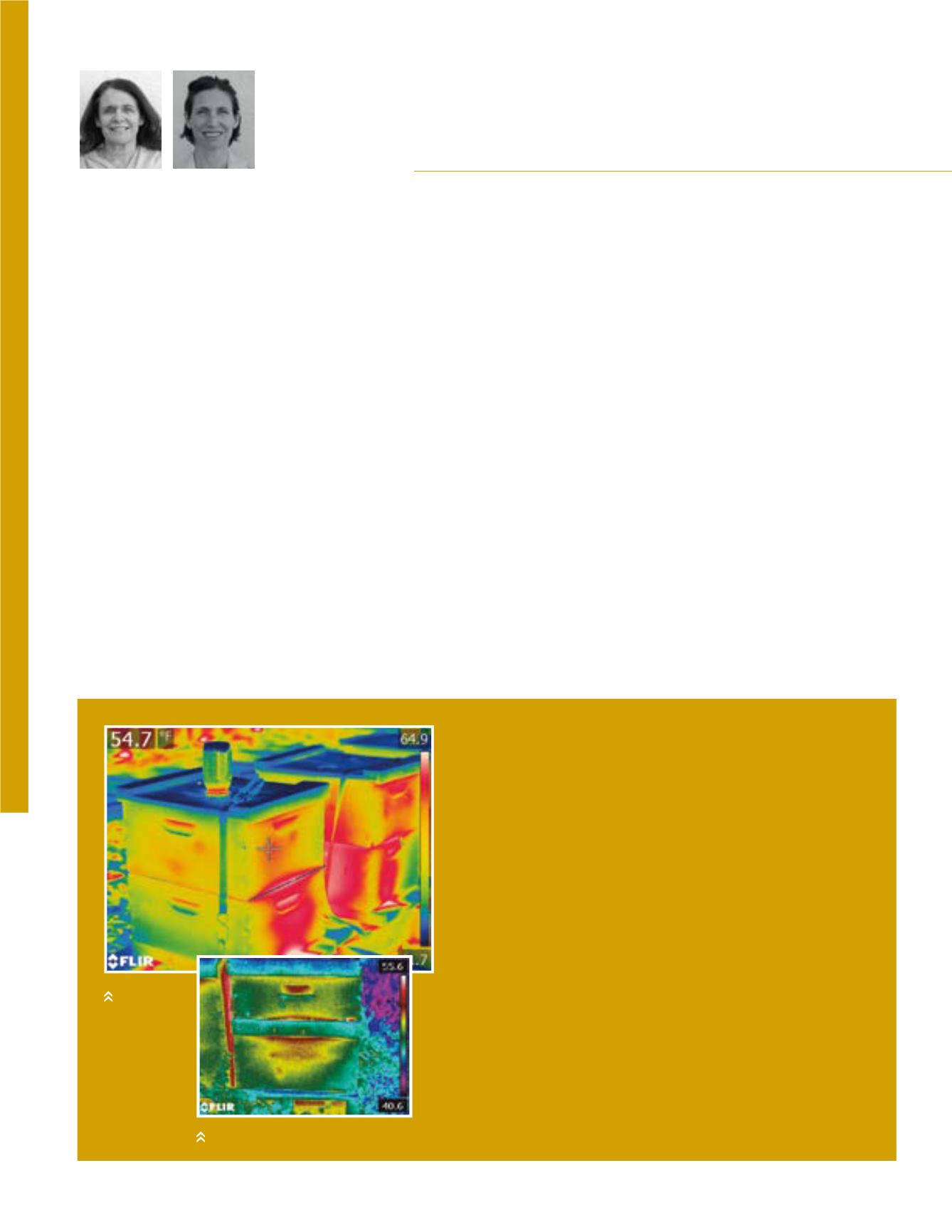
30
Almond Facts
SEPTEMBER | OCTOBER 2015
THE BEE BOX
The Bee Box
CHRISTI HEINTZ
& TARA McCALL
The numbers have been released for the ninth annual national survey of honey bee colony losses for 2014-2015 reported
by the Bee Informed Partnership. While over-wintering losses were down a bit to 23.1 percent from last year’s 23.7 percent,
summer colony losses increased to 27.4 percent from the previous year’s 19.8 percent. Over-wintering honey bee losses do not
bode well for almond growers, however, the new summer colony loss figures are interesting and disappointing. Commercial
beekeepers lost more colonies over the summer, compared to winter. The survey was fairly robust, representing nearly 15
percent of the nation’s 2.74 million colonies. The bottom line? Combined summer and winter losses are over 42 percent.
“Such high colony losses in the summer and year-round remain very troubling. If beekeepers are going to meet the growing
demand for pollination services, researchers need to find better answers to the host of stresses that lead to both winter
and summer colony losses,” said Jeff Pettis, senior entomologist at USDA’s Agricultural Research Service Bee Research
Laboratory in Beltsville, MD.
PAm -
Blue Diamond Growers
Partnership
At Project Apis m. (PAm) we are doing everything we can to prevent these losses and insure almond growers have strong
healthy colonies for pollinating their orchard investment. Since its inception in 2006, PAm has infused over $4 million into
bee research and honey bee programs. We have brought new technologies to honey bee health research, discovered new
pathogens, developed comprehensive Best Management Practices programs, initiated the ‘Seeds for Bees’ project to plant
honey bee forage and supported Tech Transfer Teams. We are the recipients of numerous grants, including corporate grants
and state and federal grants. PAm is the largest non-governmental, non-profit bee research funding organization in the USA.
Blue Diamond Growers
, via the BeeCause We Care program, is a major contributor to honey bee health.
Blue Diamond’s
funding
entrusted to PAm in 2014 targeted in-field diagnostics to assess bee strength and bee health. These studies include a study to
determine the efficacy of using Infra-Red (IR) technology to assess honey bee colony strength and two studies involving the
assessment of viruses in honey bees. The project proposals were covered in depth in the November/December 2014 issue of
Almond Facts “Bee Box,” and we’d like to share their exciting updates!
Infra-RedTechnology to Assess
Honey Bee Colony Strength
IR imaging offers the possibility of reducing the labor
needed to grade a considerable number of colonies
since a single person can rapidly assess a large number
of hives. Robert Seccomb and Dr. Jerry Bromenshenk,
Bee Alert Technology, Inc., and their team are
processing over 3,000 IR images of honey bee colonies
taken in January, 2015, and are assessing the thermal
images for accuracy of showing and sizing the colony
cluster. Enhancements are being made to the IR camera
and software to better adapt the technology to almond
grower and beekeeping operations. The research results
intend to lead to an affordable and easy-to-use means
to reduce the time and cost of grading honey bee
colonies rented for almond pollination. You will have
the opportunity to see the FLIR Thermal Camera at
the PAm trade show booth at both the California State
Beekeepers Association Conference in November and
the Almond Industry Conference in December.
The most
recent data
on honey
bee colony
losses shows
continued
winter losses
plus an
increase in
summer honey
bee losses.
Infra-Red image of a 14-frame colony.


